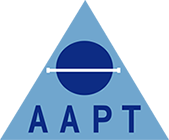News
Hidden Science Map
www.hiddensciencemap.org is launched today to tempt all scientists, technologists, engineers and mathematicians to volunteer 10 minutes of their time to tell the world about the science they use everyday.
The Science Council is calling all types of science people to come out and help them show just how much science and maths is used every day all over the UK, and the amazing range of different jobs there are out there.
From:
Astronomers and archaeologists to aerospace engineers,
civil engineers and city traders to systems biologists,
pharmacists and farmers to fireworks designers,
seismologistsand satellite designers to sports nutritionists,
vets and volcanologists to virologists,
if you are using science, maths, engineering or technology as the foundation for your work or career they would like you to put yourself onto the new www.hiddensciencemap.org which has launched today part of 2011 National Science and Engineering Week. Everyone in the science Diaspora can help us to show science is happening somewhere in every town and city, in every village, in every street, in the countryside and at the seaside.
Diana Garnham, Chief Executive of The Science Council, explains the need to branch out from the usual formal style of science career profiles, which can often put young people off being a scientist:
"The UK’s science and technology sectors will be driving the economy in the 21st century so we need to do more than ever before to attract young people to aspire to be a scientist. But young people don’t realise that there are scientists living and working all around them so our message needs to draw on the science in people’s daily lives to show that there are more ways to be a scientist than they think."
The map is open to individuals, including retired science people and aspiring scientists and students, organisations, employers and teams of scientists. A short profile takes about 10 minutes.
Those with a creative streak, or with lots of friends and colleagues who want to join in, can make a place portrait (our name for a group image) to which personal and organisational profiles can be pinned.
Dee Rawsthorne, Outreach Coordinator for the Norwich BioScience Institutes, who organised the first 'place portrait' said: "It is great to be part of a larger event and have a bit of fun; and it was a way of doing important science communication which got everyone working together, but didn’t require too much individual effort."
